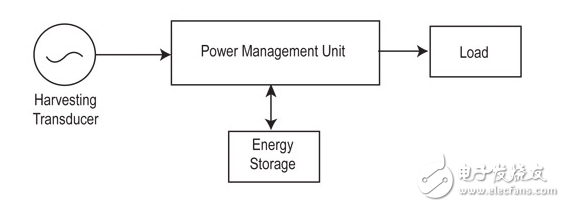
资料下载

能源收集存储选项:可充电电池,超级电容器,或两者兼而有之?
能源收集存储选项:可充电电池,超级电容器,或两者兼而有之?
当能量源不稳定且不可预测时,能量收集也许更精确地称为“能量清除”——这是一种越来越可行的供电方式,而无需提供外部电源或定期更换电池。这实际是由多种因素造成的:更好的储能元件,改进的电源管理组件,并可以操作和执行有用的功能电路,如记录和报告使用无线只是微安和毫瓦的功率数据。
能量收集系统由四个主要功能组成:一个能量源(换能器),一个储能元件,一个启动过程中的整体管理控制器,收获,操作模式(通常是重叠的);以及负载本身(图1)。我们来看看最常见的两种储能元件:可充电电池(在大多数情况下,锂化学变化)和超级电容器(也称为超级电容和超级电容,虽然正式名称是双电层电容器)。

Figure 1: Four functional elements are common to all energy-harvesting designs: the source transducer, the energy-storage element, the load, and a system controller or power-management unit.
Both are good options, but they have some operational differences with respect to capacity/power and energy density, charge/discharge cycles, discharge depth, form factor, ruggedness, load transient performance, lifetime, and cost. How you assess and weight these parameters depends, of course, on your application specifics, priorities, and constraints.
An important caution to keep in mind: the terms “energy” and “power” are both used in energy-harvesting applications. They are intimately related, of course: power is the rate which energy is being used (work is being done), and energy is the time-integral of power—but depending on your application and which part of its operational cycles you are at, you may be more interested in one than the other. So be careful in your use of these words, and be sure you know which one you really are concerned with at any given instant.
声明:本文内容及配图由入驻作者撰写或者入驻合作网站授权转载。文章观点仅代表作者本人,不代表电子发烧友网立场。文章及其配图仅供工程师学习之用,如有内容侵权或者其他违规问题,请联系本站处理。 举报投诉
- 相关下载
- 相关文章





